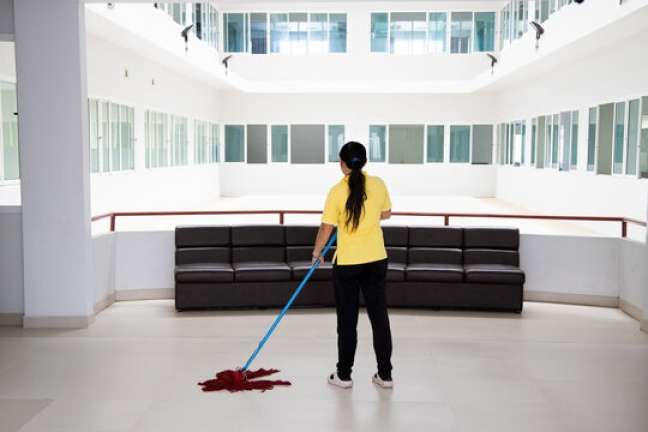Technology has transformed today’s education sector by introducing certain factors that were ignored in the 20th century. Modern-day educators have realized that traditional teaching methods aren’t fruitful enough to prepare students to tackle career challenges. Therefore, our schools are now focusing on teaching “soft skills” to students to prepare them for future careers, such as critical thinking. These “soft skills” don’t just make students eligible for several employment positions in the future. They compel our younger generation to broaden their intellectual horizon and unearth their multiple intelligences.
So, let’s discuss how teachers can boost their students’ critical thinking in the classroom.
How can Teachers Make Students Critical Thinkers?
So, how do we define critical thinking? It’s described as the ability to think rationally and understand the connection between facts and ideas. In other words, it’s the action of “thinking profoundly” and identifying flaws in the way we imagine stuff. This process is further divided into several steps that involve pinpointing a question, collecting relevant information, and examining it to draw meaningful conclusions in the end. Critical thinkers are curious, creative, and intelligent problem-solvers. Teachers have always been encouraging critical thinking in the classroom. But now, educators are willing to incorporate it into the syllabus formally.
So, here’s how to make students better critical thinkers:
1. Instruct mindfully
In today’s classrooms, every student possesses distinct capabilities and talents. Leveraging a specific teaching method might prove beneficial for some students while not that advantageous for others. Therefore, teachers must be mindful of each students’ multiple intelligences and help them hone specific skills accordingly. For this purpose, teachers can even earn an MSE in Curriculum & Instruction online degree to strategically design lesson plans. This online degree allows them to draft curriculums that instill critical thinking, problem-solving, and leadership skills in students.
2. Utilize the power of questioning
Teachers should not only encourage students to memorize information but also investigate carefully. Educators must ask thoughtful questions that compel students to ponder thoroughly and respond soundly. Many students often answer succinctly without maintaining eye contact, displaying their disinterest. This in-depth questioning method provokes students to form their opinions and suggest solutions to the inquired problem. To promote critical thinking, ask them to:
- Be specific.
- Give examples.
- Illustrate the answer.
- Provide further details on the topic.
- Answer the question from another perspective.
3. Let them help themselves
It’s almost tempting for teachers to resolve students’ problems by themselves – especially when these are kindergarteners. They wish to soothe a weeping child by offering some help. However, they should instead help the student figure out a solution. For instance, let’s say a student has lost their notebook. Instead of providing a spare, the teacher must assist them in finding the lost item. As a result, the student will think, seek others’ help, and decide on ways to search for the missing notebook. It empowers the pupils and permits them to become self-reliant, thereby critical thinkers.
4. Hold student-led discussions
Studies indicate that 47% of school children are often disengaged in their classes. So, educators must create student-centered classrooms to enhance their critical thinking abilities. These classrooms help students rely more upon their peers instead of the teacher. Students are presented with a complex problem they are tasked to solve by collaborating with their classmates. They share, discuss, and evaluate multiple ideas and opinions. Eventually, it also enhances their collaboration and people’s skills.
5. Encourage creativity
Motivate your students to remain innovative and be influenced by their imagination. It’s exciting for students to liberate their thoughts in the classroom. In traditional classrooms, the teacher creates a template for students to imitate. However, we suggest letting them produce a project the way they want and leverage the knowledge they already have to create something innovative.
6. Use stories during lectures
Storytelling is probably the oldest teaching strategy developed by human beings. Stories are compelling as they’re easy to remember. They offer a realistic situation to present concepts and enhance people’s memories. So, educators can ask students to discuss familiar stories from their cultures. We have several well-known stories, e.g., Cinderella and Snow White. Ask them about the morals of these well-celebrated stories and what lessons they learn from them.
7. Connect stories with concepts
Now, students should connect these stories with real-life events. Ask them to compare two similar narratives and find similarities and differences. Discuss which version conveys the moral better. Ask the class about any unrealistic features of the story as well. This practice enables students to evaluate the ideas presented in these stories critically. As a result, they will learn the importance of not judging things merely through the surface.
8. Promote problem-based learning
Some teachers also employ PBL (problem-based learning) to boost students’ critical thinking abilities. This strategy involves the educators asking students to discuss a problem and find solutions, just like most methods we’ve discussed before. However, PBL follows a specific structure:
- Students are given a particular issue, and they must find a solution.
- The teacher asks students to brainstorm possible solutions by investigating and discussing these solutions separately.
- Students collaborate with their fellows in the class to reach a consensus. Lastly, they explain all the steps required to implement the final solution.
Conclusion
Why is critical thinking important? Nowadays, recruiters in every industry and field look for this particular skill in every candidate. And that’s why students should hone this skill in the classrooms. Teachers should change their instructional strategies and create a student-centered classroom. They must promote problem-based learning where students collaborate with their peers to resolve complex matters. It empowers students and encourages them to become free thinkers capable of forming unique perspectives and opinions. As a result, students become well-rounded individuals possessing essential skillsets and capabilities crucial for long-run success.
















